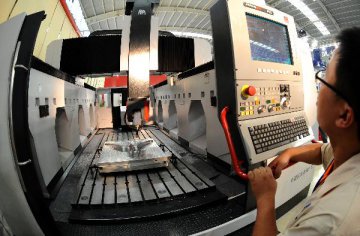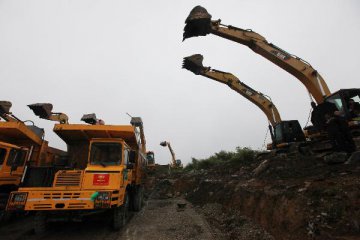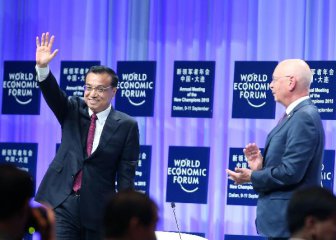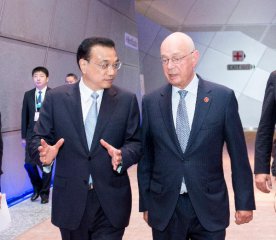
China has set itself an official economic growth target of 6.5 to 7 percent this year, reassuring the world that market-oriented reforms can provide a stabilizing effect. The annual session of the top legislature closed on Wednesday, with approvals of the government work report and the 13th Five-Year Plan outline among other bills.
Among 2,859 legislators who attended the closing meeting, 2,778 voted for the 13th Five-Year Plan outline, and 2,814 for the government work report. The plan outlines the policy framework, priorities and economic and social goals for 2016-2020, including an average annual growth rate of above 6.5 percent.
Meeting the targets will be crucial to realizing the goal of building a "moderately prosperous society in all aspects" by 2020. "As long as we stay on the course of reform and opening up, China's economy will not suffer a hard landing," Premier Li Keqiang told a press conference after the close of the session.
"There are both difficulties and hopes for China's economy. But given the underlying trends and fundamentals, there are more hopes than difficulties," said Li. There is enormous potential in the massive Chinese market and immense creativity among the people, said the premier.
The supply-side structural reforms China has been pursuing, including streamlining administration, delegating government powers and cutting corporate taxes, are designed to unleash more market vitality, he said. "There is much room for us to boost industrialization, and urbanization represents the largest source of China's domestic demand," said Li.
"In China's central and western regions, there is enormous room for more effective investment." "Propelled by new growth drivers and upgraded traditional ones, China's economy will be able to get through difficulties and rise to a more promising level," he said.
Last year, global economic growth slid to a six-year low. But still China managed to meet its economic development target of around 7 percent. Instead of resorting to massive stimulus measures, the country has chosen a much harder but sustainable path of development -- pursuing structural reforms, said the premier.
The premier said there may be small ups and downs in the future, but the government is prepared to exercise new macroeconomic regulation to ensure steady economic performance if necessary. Gu Qingyang, an economist with the National University of Singapore, said growth of 6.5 to 7 percent is achievable.
"China's economy is capable of achieving moderate and sound growth given its uniquely big market and huge demand from areas like pollution treatment and urbanization," said Gu. According to Li, the country is determined to press ahead with its reform agenda, and reform and development are not in conflict, as pursuing structural reforms can drive economic growth.
"In summary, we will press ahead with cutting overcapacity while avoiding massive job losses," he said, claiming that central and local governments have all the resources they need to help laid-off employees. To cushion the effect of job losses on families and society, the central government has allocated 100 billion yuan (15.34 billion U.S. dollars) to help people made redundant find new jobs over the next two years.
"The fund can be increased if necessary and the local governments should do their own job accordingly," according to Li. Li also vowed to cut more red tape to give more play to the market this year. The central government has already cancelled one third of the items subject to administrative reviews and approvals since 2013. "Transformation is never smooth and happy for everyone.
With such a big population, it will be difficult for China," said Fredmund Malik, a senior Austrian economist invited to Beijing to offer advice on the government work report, along with 12 other foreign experts in January. "Chinese leaders are both very competitive and very open-minded," said Malik. "I believe these leaders are taking the nation in the right direction."
























Latest comments